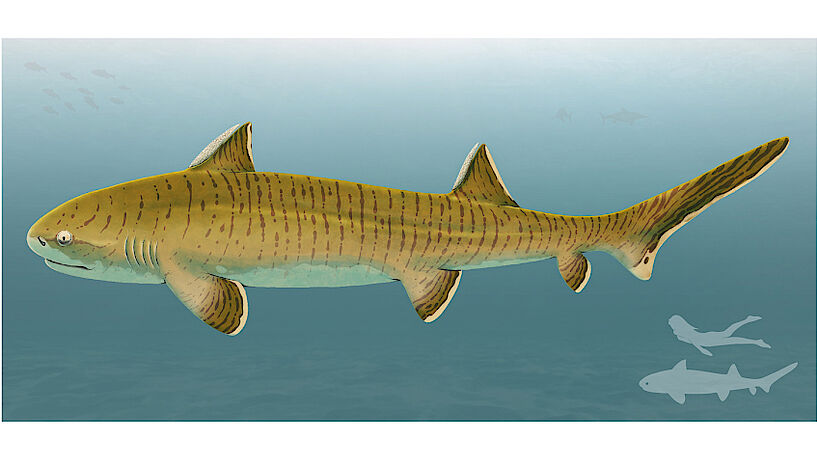Spectacular fossil discovery: 150 million year old primeval shark was one of the largest of its time
An international team led by the paleontologist Sebastian Stumpf from the University of Vienna describes in a new study an exceptionally well-preserved skeleton of the extinct primeval shark Asteracanthus. This extremely rare fossil find comes from the Solnhofen limestone in Bavaria, which was formed in a tropical-subtropical lagoon landscape during the Upper Jurassic 150 million years ago. The almost completely preserved skeleton shows that Asteracanthus measured a total length of two and a half meters during its lifetime, which makes this primeval shark one of the largest of its time. The results of this study are currently published in the journal “Papers in Palaeontology”.
Cartilaginous fish, which include sharks and rays, are one of the most successful vertebrate groups still alive today. Because of the permanent dentures, teeth of cartilaginous fish are among the most common fossil vertebrate finds. The comparatively low resistance of their cartilaginous skeletons, on the other hand, prevents the fossilization of fully preserved animals in most cases – unless there are special conditions during this time.
The Solnhofen limestone from the Franconian Alb in Bavaria, which was formed during the Upper Jurassic about 150 million years ago and also achieved world fame through the discovery of the feathered dinosaur Archeopteryx, is such a rare occurrence. Over the past 150 years, fossil excavations have been carried out in numerous places Shark and ray skeletons recovered. In the current study, Sebastian Stumpf’s team presents the largest shark skeleton ever recovered there. It is an almost completely preserved skeleton of the hybodontiform shark Asteracanthus, the total length of which was two and a half meters during its lifetime, which made it a giant among the Jurassic sharks.
These sharks, which are the closest relatives of modern sharks and rays, first appeared in the Devonian Mountains 361 million years ago and died out with the dinosaurs at the end of the Cretaceous 66 million years ago. They had two dorsal fins, each supported by a powerful fin spine. The size range of the sharks ranged from a few centimeters to nearly three meters, which makes Asteracanthus one of the largest representatives of both its group and its time. Modern sharks and rays, which were already rich in species during the Jura, only reached a size of up to two meters.
Asteracanthus was described more than 180 years ago by the Swiss-American naturalist Louis Agassiz using isolated fin spines. Connected skeletal remains were missing until now. The dentition of the skeleton is extremely well preserved and contains more than 150 teeth, each with a central main point and several secondary points. “This type of dentition indicates that Asteracanthus was a hunter who had a wide range of food. It was certainly not only one of the largest cartilaginous fish of its time, but also one of the most impressive,” says Sebastian Stumpf.

